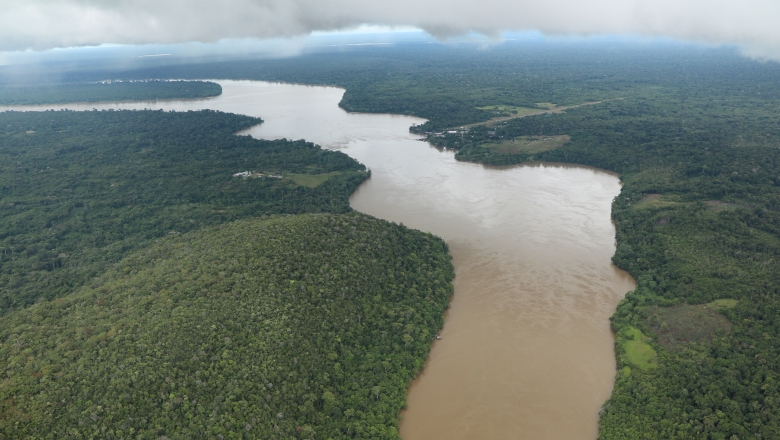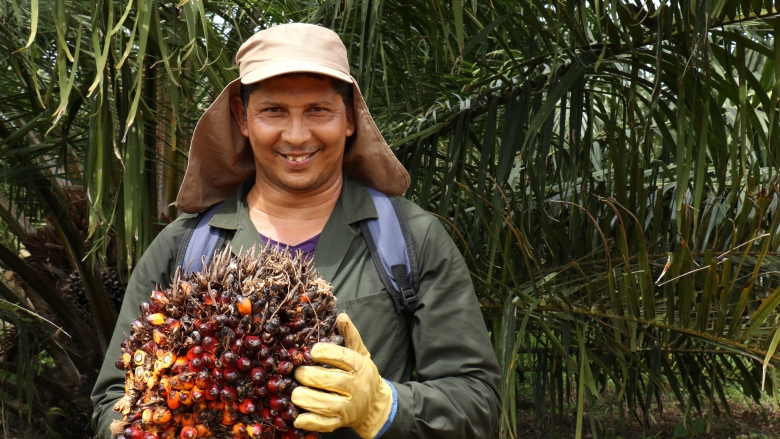Challenge
Colombia’s growth had been sustained by rising wealth and by a relatively important, albeit declining, stock of natural capital. Natural capital represented 10 percent of Colombia’s total wealth, but it was under threat from air and water pollution in urban areas, forest and land degradation, and growing vulnerability to natural disasters and climate change effects. Colombia’s adjusted net saving rate fluctuated around zero, well below the Organisation for Economic Co-operation and Development and regional averages, implying an unsustainable growth model. Continuing degradation of the country’s natural capital would threaten its medium- and long‐term human, economic, and ecological health. Environmental problems, such as urban air pollution, indoor air pollution from household burning of solid fuels, and inadequate access to improved water sources and sanitation imposed high costs in terms of human illness and premature death. In 2013, deaths due to pollution were estimated at more than 15,000. Jointly, pollution issues accounted economic costs equivalent to 2 percent of GDP. Combined natural resource losses and pollution damages were estimated at about 3.7 percent of GDP in 2007.
Approach
With the goal of conserving natural resources, improving environmental health, and enhancing
resilience to natural disasters and climate change, the government made green growth a central crosscutting element of its 2014–2018 National Development Plan. By greening growth, Colombia aimed to reduce negative impacts of pollution on human and man-made capital, on the one hand, and, on the other, to reduce natural resource depletion and environmental degradation. The Green Growth Strategy was developed with Bank support in a process called the Green Growth Mission, later refined as the Green Growth Policy. The government requested an inter-sectoral operation to leverage the Bank’s assistance in enhancing alignment of sector strategies around common sustainability objectives. The Sustainable Development and Green Growth Development Policy Loan (DPL) series sought to support the strategy, building on a long-standing dialogue with the government and a previous, three-part sustainable development DPL series financed by the Bank between 2005 and 2009.
Results
The Sustainable Development and Green Growth DPL series supported several reforms.
- The DPL series operationalized Colombia’s only public fund for nonconventional and energy efficiency measures, Fondo de Energías No Convencionales y Gestión Eficiente de la Energía (FENOGE). As a result, FENOGE received Col$ 62.1 billion from the national budget and is implementing 14 projects expected to increase energy efficiency by reducing consumption by 11,874 kilowatt hours per year and installing a nonconventional renewable energy capacity of 341 kilowatt peak (kWp), with an expected savings of 6,800 tons CO2-equivalent per year. Another 15 projects have already been approved and are expected to reduce emissions by another 6,800 tons CO2 equivalent per year. While these amounts are not large in absolute terms, their relative scale is important in rural areas disconnected from the national grid.
- The project has facilitated electricity provision to 19,837 beneficiaries in areas not covered by the national grid.
- Through the Forests for Peace program and the new system for environmental services payments, 27 projects involving environmental authorities and territorial entities benefited 17,555 families and preserved or restored a total of 7,405 hectares. In addition, 22 subnational environmental authorities and 28 territorial entities implemented three payment for ecosystem services programs between 2015 and 2018. These programs provided incentives for the conservation of ecosystems, particularly forests, covering an area of almost 115,000 hectares and benefited 10,560 families.
- Project-related efforts reduced the mean annual concentration of fine particulate matter in the monitoring stations in the cities of Medellín, Itagüí, and Bogotá, which fell on average by 24.4 percent compared to 2014 baselines.
- Access to improved water sources in rural areas was facilitated for 589,107 people.
- Solid waste disposal improved in 40 municipalities.
Bank Group Contribution
The World Bank, through the International Bank for Reconstruction and Development (IBRD), financed two development policy loans totaling US$ 1.2 billion.
Partners
The loan was coordinated with parallel like-minded policy loan operations from the governments of Germany and France, as well as the Corporacion Andina de Fomento (CAF).
Beneficiaries
Colombia’s population of 49 million benefited from the policies implemented as part of the DPL series. These benefits include the positive health effects generated by reduced air pollution and improved access to sanitation and clean drinking water. Furthermore, reforms to improve solid waste management reduced the risk of illness and injury from soil and water pollution stemming from landfilling. The living standards of waste pickers were also improved through regularized tariff schedules.
Moving Forward
The DPL supported the government’s green growth agenda, with parallel technical assistance provided for formulating its green growth strategy. These efforts found expression in the government’s green growth policy, which the new administration incorporated into its 2018–2022 National Development Plan.
Learn More

